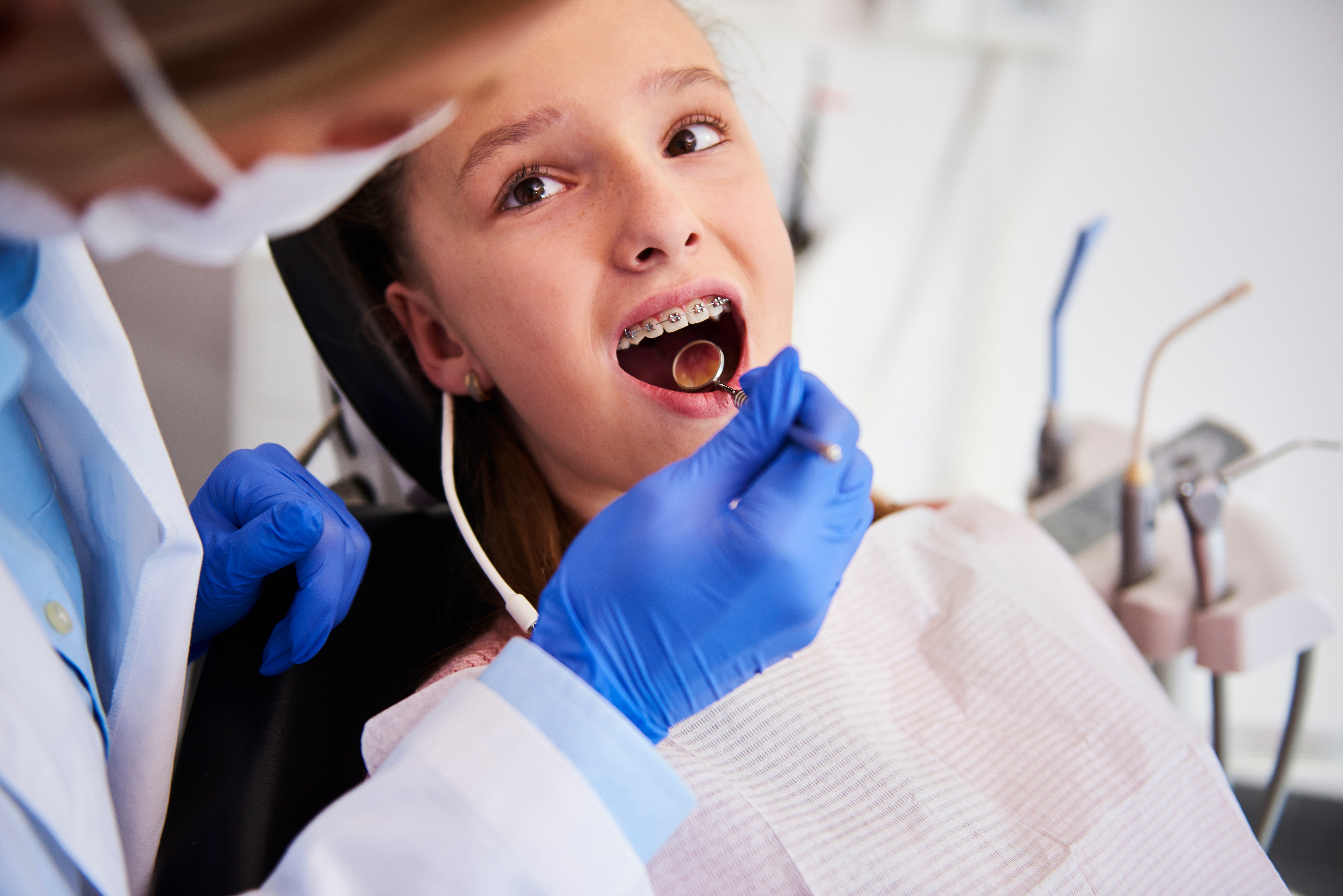As a parent, you want the best for your child’s health—including their smile. If your child needs orthodontic treatment, you may be wondering whether Invisalign is the right choice. While traditional braces are still common for kids and teens, Invisalign has become an increasingly popular option for its convenience and discreet appearance.
This guide explores how Invisalign works for younger patients, when it’s appropriate, and what parents in Omaha should know before starting treatment.
What Is Invisalign?
Invisalign is a modern alternative to metal braces. Instead of using wires and brackets, it uses a series of clear, removable aligners to gently shift teeth into the desired position. These aligners are custom-made for each patient and typically changed every one to two weeks.
Invisalign is especially popular among older kids and teens who want a low-profile option that fits more comfortably into their daily routines.
How Invisalign for Kids Works
Invisalign for younger patients works similarly to adult treatment, but with a few differences tailored to growing smiles. Most children who use Invisalign are in their early to mid-teens, though some may qualify for Invisalign First—a system designed for kids ages 6 to 10 who still have some baby teeth.
Here’s what makes Invisalign suitable for younger patients:
- Custom aligners that adapt to a growing mouth
- Built-in features to accommodate erupting teeth
- Optional compliance indicators to track wear time
- Digital scanning to avoid traditional impressions
As your child progresses, their orthodontist will monitor growth and make adjustments as needed to keep treatment on track.
Signs Your Child May Be Ready for Invisalign
While every child develops differently, here are a few signs that may indicate your child is ready for Invisalign:
- They have most or all of their permanent teeth
- They are responsible and can follow instructions
- They feel self-conscious about the appearance of metal braces
- They participate in activities where comfort or appearance matters (like sports or music)
- They want the ability to remove aligners for eating and brushing
Responsibility is key—your child must be willing to wear the aligners for 20–22 hours per day and keep up with proper care.
Benefits of Invisalign for Kids and Teens
There are several reasons Invisalign may be a good fit for younger patients:
- Discreet appearance — Clear aligners are virtually invisible
- No food restrictions — Aligners are removed before eating
- Easier brushing and flossing — No wires or brackets to work around
- Fewer office visits — Aligners often require fewer adjustments than braces
- Comfort — Smooth plastic aligners are less likely to cause mouth irritation
These benefits can make the treatment experience smoother for both kids and parents.
What Parents Need to Know
Before starting treatment, it’s important to understand the responsibilities and expectations involved with Invisalign:
- Wear time matters — Aligners must be worn nearly full-time to be effective
- Lost aligners can delay progress — Kids need to keep track of them
- Routine matters — Regular check-ins with the orthodontist are still required
- Hygiene is essential — Teeth and aligners must be cleaned daily
Talk with your child about the importance of staying on schedule, especially since Invisalign success relies heavily on patient cooperation.
Invisalign vs. Braces: What’s the Best Fit?
Each child is unique, and your orthodontist will help you decide which option is best. Here’s a comparison to help weigh the pros and cons:
- Removable
- Nearly invisible
- Easier to clean
- Requires discipline
- May not be ideal for severe alignment issues
- Fixed to teeth
- More visible
- Reliable for all case types
- Less dependent on patient compliance
- Regular adjustments needed
The best choice will depend on your child’s maturity, oral health needs, and lifestyle.
What to Expect During a Consultation
An orthodontic consultation is the first step in deciding whether Invisalign is right for your child. During the visit, the orthodontist will:
- Review your child’s dental and growth development
- Take digital scans or X-rays to assess tooth and jaw alignment
- Discuss treatment goals and estimated timelines
- Recommend Invisalign or an alternative based on your child’s needs
- Answer any questions you or your child may have
Most orthodontic offices in Omaha offer free initial consultations, making it easy to explore your options.
Why Omaha Parents Trust Weber Orthodontics for Invisalign
At Weber Orthodontics, we understand that starting orthodontic care is a big step for both parents and kids. That’s why we make the process as smooth, supportive, and effective as possible. We offer expert Invisalign treatment for teens and growing smiles using advanced digital tools and personalized planning.
Dr. Weber has years of experience helping Omaha families achieve beautiful results with Invisalign, and our team is here to support your child’s progress every step of the way. If you’re wondering whether your child is ready for Invisalign, we invite you to schedule a consultation and explore the possibilities together.
